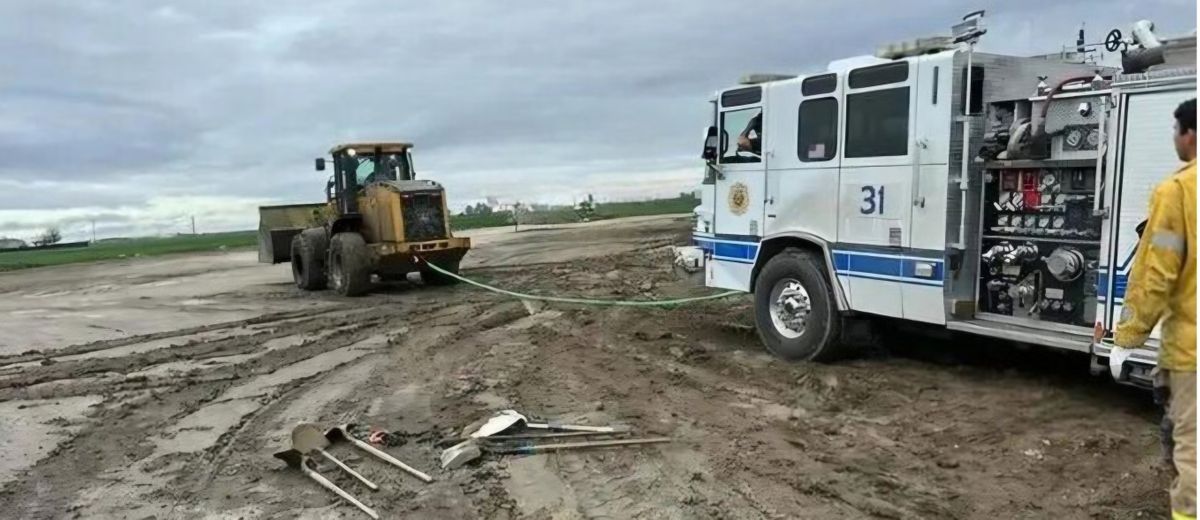
The Role of Off-road Recovery Gear on Farms: Safely Pulling Stuck Equipment and More
Farming is a demanding profession that often requires navigating tough terrain and dealing with unpredictable conditions. From muddy fields to rugged pasturelands, farm equipment can easily become bogged down or stuck in challenging environments. While tractors and other machinery are built to handle heavy-duty tasks, even the best equipment can run into trouble when faced with deep mud, snow, or uneven ground. This is where off-road recovery gear becomes an essential tool for farmers, allowing them to quickly and safely retrieve stuck machinery without losing valuable time or risking damage to their equipment. The following article explores the importance of recovery gear on farms and how it can be a game-changer in daily farming operations.
Effective Tools
Kinetic energy rope recovery offers a powerful yet controlled method for safely pulling stuck vehicles or machinery out of challenging situations. Unlike traditional tow straps or chains, these ropes store energy as they stretch and release it in a smooth, controlled manner during the pull. This makes them especially useful for freeing heavy machinery that might otherwise be difficult to extract without causing damage. The dynamic nature of these ropes also reduces the jarring forces often experienced in recovery, making it a safer and more efficient option for farmers operating in tough conditions.
A Farm Essential
Farmers rely on a wide range of machinery, from tractors and combines to utility vehicles and trucks, to complete their daily tasks. These machines are critical to the productivity of the farm, but they can also get stuck in deep mud, ditches, or other tough spots. Off-road recovery gear, including tow ropes, winches, and traction boards, is essential for any farm operation that faces challenging terrain. Tow ropes and recovery straps are perhaps the most versatile tools in a farmer’s emergency kit. A well-made recovery strap can handle heavy loads and stretch slightly to absorb the shock of a pull, making it ideal for freeing stuck vehicles. Winches are also invaluable, especially for heavier equipment or when a vehicle is deeply stuck. Winches provide a steady, controlled pull, often with the ability to handle much larger loads than a standard tow rope. Traction boards, meanwhile, help improve grip under a vehicle’s tires, allowing it to gain traction and drive out of muddy or slippery conditions without needing to be towed.
Benefits of Recovery Gear on the Farm
In addition to its primary role of pulling stuck equipment, off-road recovery gear offers a range of other benefits for farmers. One of the main advantages is reducing downtime. When equipment gets stuck in the field, every minute counts, especially during critical times like planting or harvest seasons. Having the right gear on hand allows farmers to quickly address the problem and get back to work without losing valuable time or risking further delays.
Moreover, recovery gear can prevent damage to expensive machinery. Attempting to free stuck equipment using improper techniques, such as pulling with a chain or using another vehicle to push, can result in serious damage to both vehicles. Proper recovery tools are designed to distribute force evenly and minimize the risk of damage, protecting the investment farmers have made in their equipment.
Additionally, the flexibility of recovery gear extends beyond vehicles. Tow straps and winches can also be used to move heavy loads around the farm, such as pulling felled trees, dragging large bales of hay, or repositioning heavy equipment. This versatility makes this gear a multi-use tool that goes beyond simply pulling vehicles out of tough spots.

Choosing the Products
When selecting off-road recovery gear for the farm, it’s important to choose high-quality tools that are suited for the size and weight of the equipment being recovered. For example, recovery straps and kinetic ropes should be rated for a load capacity that exceeds the weight of the heaviest machinery on the farm. Similarly, winches need to have a pulling capacity that can handle the specific demands of the farm’s equipment.
It’s also important to consider the conditions in which the recovery gear will be used. Muddy fields, snowy paths, and hilly terrain all present different challenges, and having the right gear for the specific environment is crucial. Farmers working in particularly rough or remote areas may also want to invest in additional tools such as high-lift jacks or heavy-duty shackles to assist in more complex recoveries.
Safety Considerations for Farm Equipment Recovery
While off-road recovery gear is a valuable asset on the farm, it must be used correctly to ensure safety. Recovery operations can be dangerous if not performed properly, particularly when dealing with heavy machinery or vehicles stuck in precarious positions. Farmers should familiarize themselves with the proper techniques for using tow straps, winches, and other recovery tools, and always follow the manufacturer’s guidelines regarding load limits and usage instructions.
It’s important to ensure all bystanders are clear of the recovery zone, as the forces involved can be substantial. Additionally, checking the recovery gear regularly for wear and tear is essential, as damaged equipment can fail during a recovery, posing significant risks.
Conclusion
Off-road recovery gear plays a vital role on modern farms, helping farmers stay productive and protecting their valuable equipment from damage. Whether pulling a stuck tractor from a muddy field or moving heavy materials around the farm, recovery tools are essential for navigating the challenges of rural environments. By investing in high-quality recovery gear and using it safely, farmers can save time, prevent costly repairs, and ensure the smooth operation of their farm.
